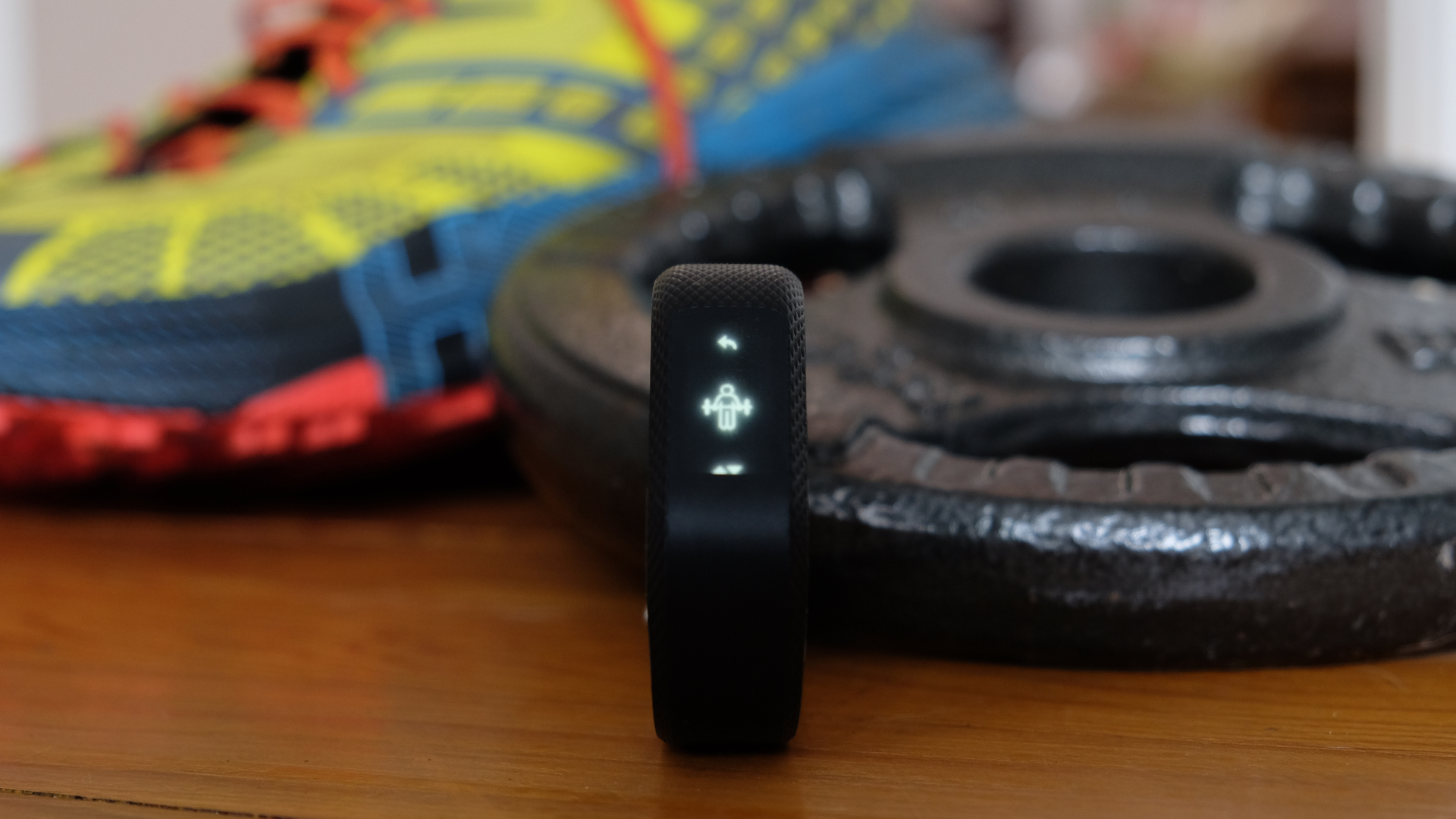Why you can trust TechRadar
- No GPS
- Tracks reps, stress and fitness age
- Basics like steps and sleep also covered
When it comes to tracking metrics, the Vivosmart 3 is right up there with the best activity trackers around. Of course, by activity tracker we mean wearables without GPS.
What it lacks in location tracking it makes up for with a heart rate sensor, accelerometer, barometric altimeter and ambient light sensor. There’s also Bluetooth Smart and ANT+ connectivity.
All that means you get plenty of base tracking metrics like steps, sleep, calories burned and distance traveled. But you also get more advanced measures like VO2 max, strength reps, floors climbed, fitness age and even a stress score.

Disappointingly, the Vivosmart 3 can’t even connect to the GPS on your phone. That said, for rough measures of distance you could use this, sort of. We ran a route that was measured on GPS as 7.64 miles, but the Vivosmart 3 had it down as 6.72 miles.
The Vivosmart 3 uses a guess at stride length which you can edit - we didn’t do this hence the inaccuracy probably being greater than it needed to be.
Shorter distances offer better results, with a GPS-tracked 4.97 miler coming out at 4.84 miles on the Vivosmart 3. All that said this isn’t made for run tracking distance, it’s the gym where it excels. If a running watch is what you're after, consider something like the Garmin Vivosmart HR+.

Unlike a lot of the competition out there the Vivosmart 3 actually offers rep counting for weight training.
You’ve probably been there before, sweating and panting mid-workout, only to realize you’ve lost count of your reps. This genuinely helps avoid that - it also keeps you honest so you get the best workout.
We did have some trouble getting an accurate measure initially, but with a little practice and more use we were able to get better readings of reps. This will likely improve over time too as Garmin sends out updates to the Vivosmart 3.
Comparing heart rate on a run between a chest strap and the optical heart rate monitor on the Vivosmart 3 revealed that accuracy was decent. The picture below shows the Vivosmart 3 on the left and the chest strap on the right (named Running).

While on the run, heart rate often varied by about 10bpm between the two, but once uploaded the Garmin algorithm magic shows an average with only 1bpm difference.
The graph shows the more sharp changes on the Vivosmart 3 over a chest strap’s smoother transitions. But that average accuracy is reassuring, especially when it comes to working out other metrics from that HR score.
The other measure that makes this cutting edge is the inclusion of VO2 max - a classic measurement of health based on the maximum amount of oxygen in your system. The Vivosmart 3 uses this to assign you a fitness age, with the idea being that the lower the fitness age is compared to your actual age the better.
Of course, this isn’t a true score as it’s obtained by using heart rate and a few other metrics to reach that figure, so it’s more of a guide. But a good one it is since it allows you to see if you’re getting fitter as you train which - other than motivation - is the whole point of these wearables, right?

Another nice touch is a stress score - also based on heart rate. This was a bit hit and miss sometimes with readings of high stress when relaxed and vice versa.
Like most wrist-based heart rate measures you tend to notice a more accurate measure over time when looking at it on the Garmin Connect app, rather than there on the wrist.
This is due to more algorithm smarts helping out with averaging to give a more smoothed out reading. So you’ll see that stress count going up during your commute and dropping during dinner.

So what’s the point? If you have higher stress you can opt to try a guided breathing exercise that calms you - a nice idea and it does work, just as a reminder to actively relax, if nothing else.
For that ultimate relaxation time, sleep, the Vivosmart 3 is there too, still tracking away. Thanks to the auto-tracking this means both for sports and sleeping you can just start and you’ll be tracked.

Sleep timing is accurate thanks to those movement sensors, however the measure of light and deep sleep appears to be a little on the generous side. When compared with a dedicated sleep tracker Garmin shows you sleeping a little better than you did. Still, a positive start to the day is a nice thing, right?
Everything is best viewed in the Garmin Connect app. When using this, and Bluetooth on your connected phone, the notifications work well for your messages, with WhatsApps appearing so you can read them right there on the wrist.
You can also control your music with simple screen taps too - nice touches on what feels like a device that should be too small to offer so many options.
Current page: Specs, performance and fitness
Prev Page Introduction, design and display Next Page Compatibility, battery life and verdictLuke is a freelance writer and editor with over two decades of experience covering tech, science and health. Among many others he writes across Future titles covering health tech, software and apps, VPNs, TV, audio, smart home, antivirus, broadband, smartphones, cars and plenty more. He also likes to climb mountains, swim outside and contort his body into silly positions while breathing as calmly as possible.

